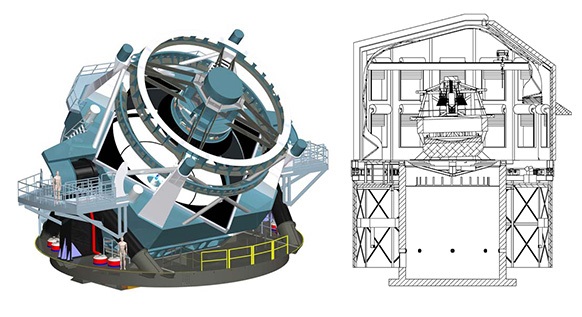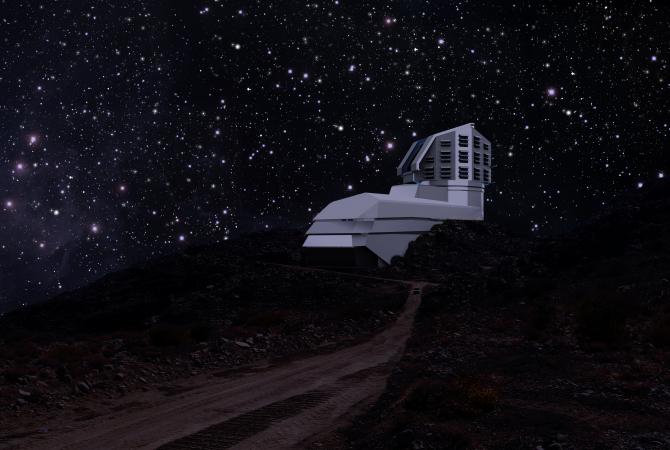August 5, 2014
With a key funding approval, the Large Synoptic Survey Telescope, an international astronomy project of which the University of Washington is a founding member, is taking a major step toward becoming a reality.
The National Science Foundation agreed Friday to support the Association of Universities for Research in Astronomy in managing construction of the long-planned telescope — called the LSST for short — to be built on Cerro Pachón, a mountain in northern Chile.
“The LSST is one of the most exciting experiments in astrophysics today,” said Andrew Connolly, UW professor of astronomy, who heads the UW group managing data for the telescope. “When it comes online at the end of this decade, it could completely transform our knowledge of our universe, from understanding how dark energy drives the expansion of the universe, to identifying asteroids that may one day impact the Earth.”
Connolly is one of several UW researchers involved in the project. Others include Zeljko Ivezic, professor of astronomy and project scientist; Andrew Becker, research associate professor; Mario Juric, astronomy professor; and research associates Lynne Jones, Simon Krughoff, Scott Daniel and Russell Owen, as well as graduate student Yusra AlSayyad.
The telescope is expected to see first light (or its first use) in 2019 and begin its decade of full science operations in 2022. The NSF construction budget will not exceed $473 million and annual operation costs have been estimated at $40 million, in 2013 dollars.

At left, a rendering of the Large Synoptic Survey Telescope. At right, a drawing of the telescope’s enclosure design.
Photo: LSST
When operational, the telescope will scan the entire visible sky every few nights from its mountaintop location, in time producing an unprecedented astronomical survey of the universe with its 27.5-foot ground based telescope. Its data will be available to the public as well as scientists. UW work on the telescope includes building the software tools to detect nightly changes in the sky and alert astronomers globally to anything new.
The project is a partnership between the NSF and the Department of Energy. The NSF will oversee the telescope, site, data management system and education and outreach, while the Energy Department will provide the camera and related instrumentation.
The Association of Universities for Research in Astronomy is a consortium of 39 U.S. institutions and six international affiliates. The telescope passed its final design review by the NSF in December of 2013. The Energy Department’s approval of the telescope’s camera is expected this fall.
The UW’s Connolly said the huge flow of data from the telescope will “open up the window of time,” creating a digital movie of the universe. This will be used to create models “for how our universe works — models that can predict its future and explain its past.”
Adapted from a news release by the Association of Universities for Research in Astronomy.















